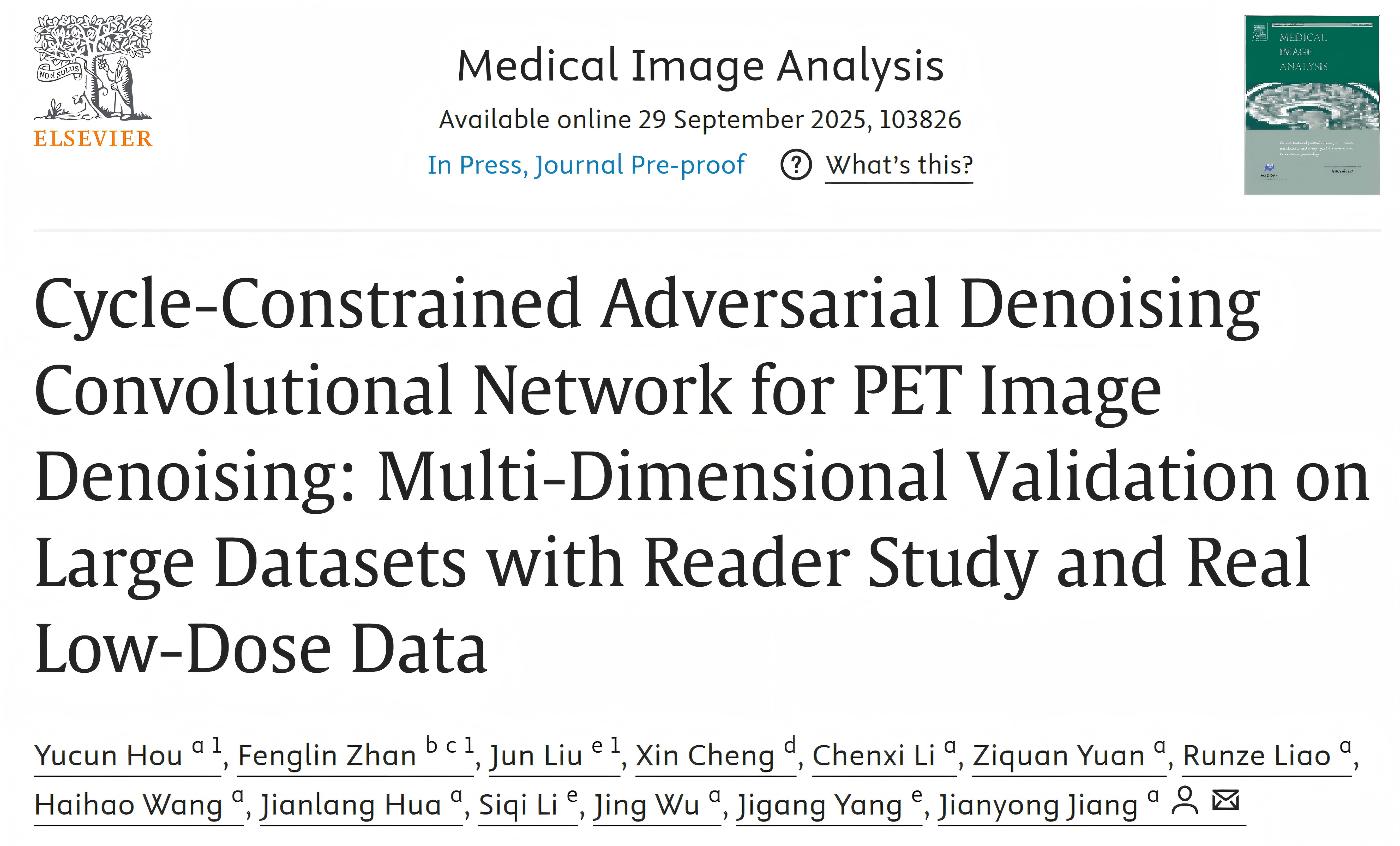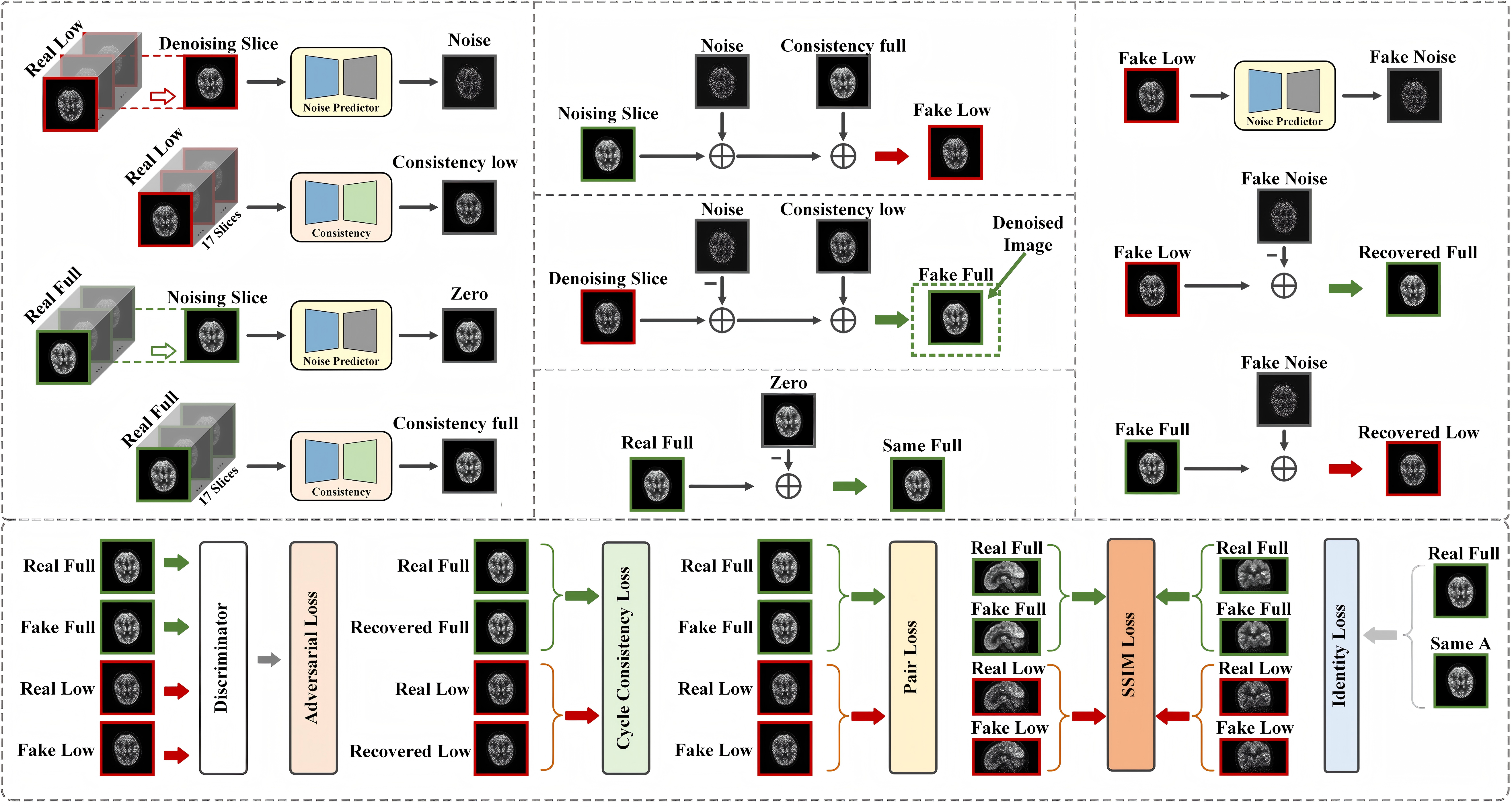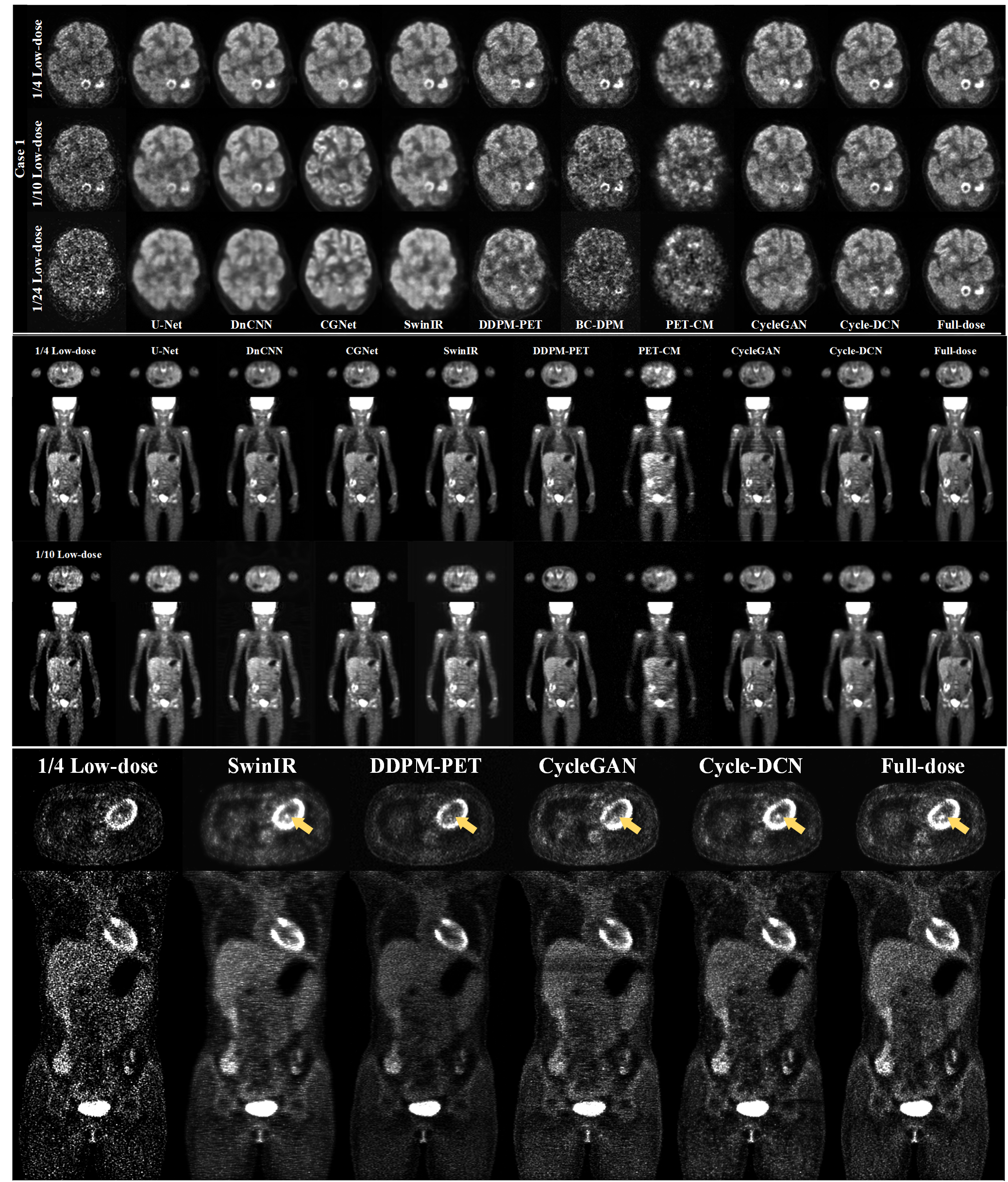Professor Jiang Jianyong's Team from the School of Physics and Astronomy Published an Article in Medical Image Analysis
In recent days, professor Jiang Jianyong's team from the School of Physics and Astronomy have published an article named Cycle-Constrained Adversarial Denoising Convolutional Network for PET Image Denoising: Multi-Dimensional Validation on Large Datasets with Reader Study and Real Low-Dose Data in Medical Image Analysis. It proposed and extensively investigated a novel Cycle-constrained Adversarial Denoising Convolutional Network (Cycle-DCN) aimed at reducing noise while preserving diagnostic integrity in PET images.




The abstract of the paper is as follows:
Positron emission tomography (PET) is a critical tool for diagnosing tumors and neurological disorders but poses radiation risks to patients, particularly to sensitive populations. While reducing injected radiation dose mitigates this risk, it often compromises image quality. To reconstruct full-dose-quality images from low-dose scans, we propose a Cycle-constrained Adversarial Denoising Convolutional Network (Cycle-DCN). This model integrates a noise predictor, two discriminators, and a consistency network, and is optimized using a combination of supervised loss, adversarial loss, cycle consistency loss, identity loss, and neighboring Structural Similarity Index (SSIM) loss. Experiments were conducted on a large dataset consisting of raw PET brain data from 1224 patients, acquired using a Siemens Biograph Vision PET/CT scanner. Each patient underwent a 120-seconds brain scan. To simulate low-dose PET conditions, images were reconstructed from shortened scan durations of 30, 12, and 5 s, corresponding to 1/4, 1/10, and 1/24 of the full-dose acquisition, respectively, using a custom-developed GPU-based image reconstruction software. The results show that Cycle-DCN significantly improves average Peak Signal-to-Noise Ratio (PSNR), SSIM, and Normalized Root Mean Square Error (NRMSE) across three dose levels, with improvements of up to 56%, 35%, and 71%, respectively. Additionally, it achieves contrast-to-noise ratio (CNR) and Edge Preservation Index (EPI) values that closely align with full-dose images, effectively preserving image details, tumor shape, and contrast, while resolving issues with blurred edges. The results of reader studies indicated that the images restored by Cycle-DCN consistently received the highest ratings from nuclear medicine physicians, highlighting their strong clinical relevance. A separate set of 50 whole-body PET datasets acquired using the same Biograph Vision scanner, along with an independent set of 245 whole-body pediatric PET datasets acquired using a Siemens Biograph mCT PET/CT scanner at Beijing Friendship Hospital, further validate the generalizability of the proposed model across different imaging centers, scanner types, scanning mode, patient demographics, and anatomical regions.
Reference: https://www.sciencedirect.com/science/article/pii/S136184152500372X


